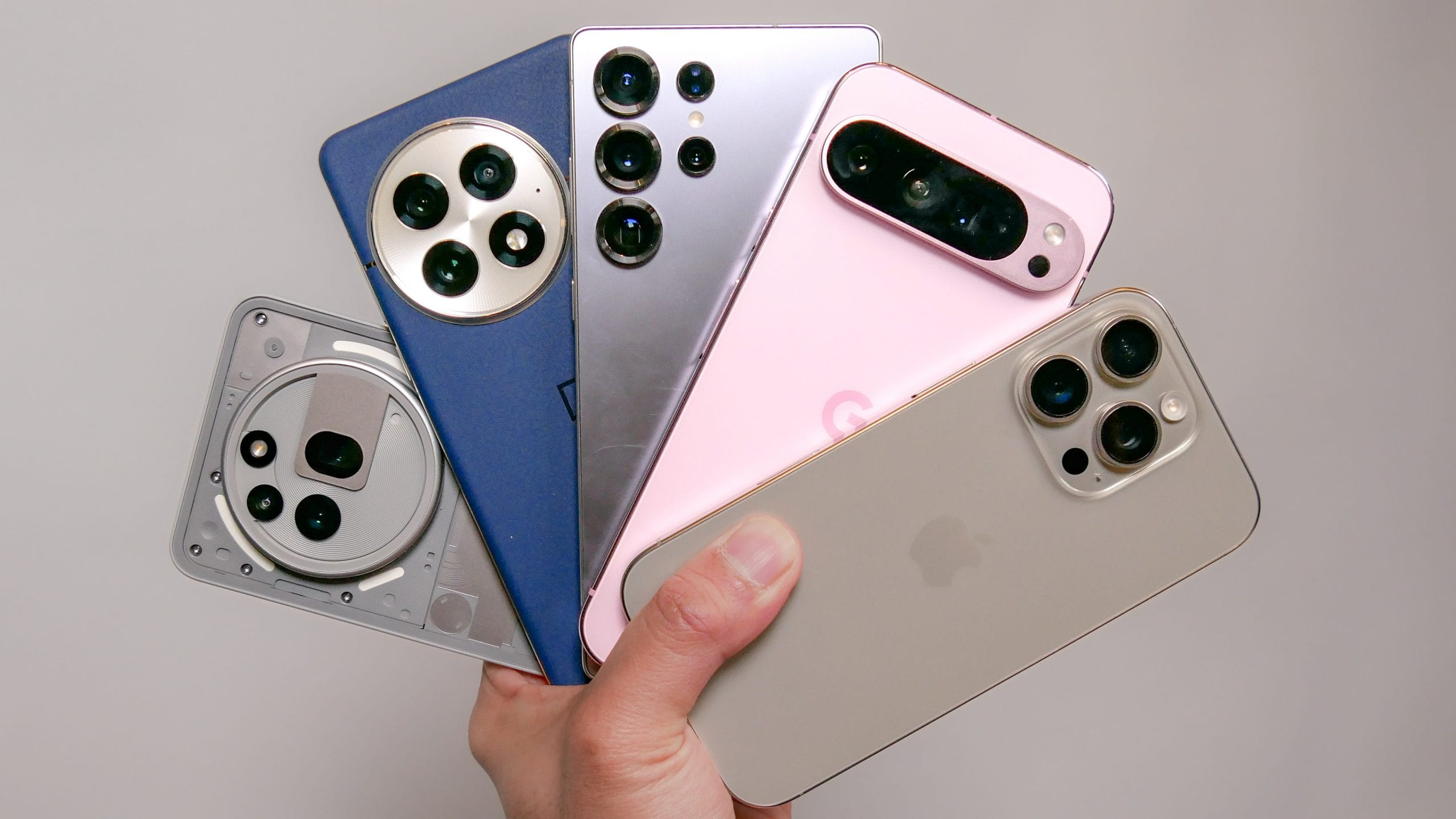The Complete Smartphone Buying Guide 2025: Find Your Perfect Mobile Companion
Updated: September 2025
Your smartphone is probably the most important purchase you’ll make this year. Think about it – you’ll use it hundreds of times daily, carry it everywhere, and rely on it for communication, work, entertainment, and capturing life’s precious moments. Yet most people spend more time researching their next coffee maker than their next phone.
I’ve been in the mobile industry for over 12 years, and I’ve watched countless customers make expensive mistakes. Just last week, Tom, a photographer, bought a flagship phone based solely on megapixel count, only to discover the camera couldn’t compete with a mid-range phone that had superior image processing. Don’t let flashy marketing fool you – this guide will help you make a smart, informed decision.
Why Choosing the Right Smartphone Matters More Than Ever
The smartphone market has reached an interesting crossroads in 2025. While innovation has plateaued in some areas, the differences between a great phone and a mediocre one have never been more subtle yet significant. A poor choice means living with daily frustrations for 2-3 years, while the right choice transforms your digital experience.
The stakes are higher now because phones have become our primary computers, cameras, entertainment systems, and productivity tools. Your choice affects everything from your professional image during video calls to your ability to capture your child’s first steps in perfect quality.
Understanding Your Smartphone Personality
The Practical User
You want reliability, good battery life, and essential features without unnecessary complexity. Your phone should work seamlessly without requiring constant attention or technical knowledge.
Priorities: Long battery life, durability, intuitive interface, good value Avoid: Cutting-edge features, complex camera systems, gaming-focused phones
The Mobile Professional
Your phone is a business tool. You need excellent email handling, video call quality, document editing capabilities, and a professional appearance during meetings.
Priorities: Display quality, performance, business app compatibility, premium build Avoid: Gaming features, experimental designs, poor enterprise support
The Content Creator
Photography, videography, and social media are central to your phone usage. Camera quality, editing capabilities, and content sharing features matter most.
Priorities: Camera systems, video capabilities, display color accuracy, storage Avoid: Budget cameras, limited storage options, poor low-light performance
The Power User
You push your phone to its limits with gaming, multitasking, media consumption, and demanding apps. Performance and advanced features justify higher costs.
Priorities: Raw performance, advanced features, large storage, fast charging Avoid: Budget processors, limited RAM, basic camera systems
Decoding Smartphone Specifications
Processor Performance: The Engine That Matters
The processor determines how smoothly your phone operates, but raw specifications tell only part of the story. A well-optimized mid-range chip often provides better real-world performance than a poorly implemented flagship processor.
Apple A-Series vs Snapdragon vs MediaTek Apple’s chips consistently lead in single-core performance and power efficiency. Qualcomm’s Snapdragon processors offer excellent Android optimization and gaming performance. MediaTek has emerged as a strong value option, providing flagship features at mid-range prices.
Real-World Performance Indicators:
- App launch speed
- Multitasking smoothness
- Gaming frame rates
- Camera processing speed
- AI feature responsiveness
Memory and Storage: Your Digital Workspace
RAM Requirements by Usage:
- 6GB: Adequate for basic usage and light multitasking
- 8GB: Comfortable for most users, handles moderate multitasking well
- 12GB+: Future-proofing and heavy multitasking, often overkill for average users
Storage Considerations: Modern apps, photos, and videos consume significant space. While cloud storage helps, local storage ensures performance and offline access.
- 128GB: Minimum for most users, requires active management
- 256GB: Sweet spot for average users with room for growth
- 512GB+: Power users, content creators, and digital hoarders
Display Technology: Your Window to Everything
OLED vs LCD: The Visual Experience OLED displays offer superior contrast, deeper blacks, and more vibrant colors but can suffer from burn-in over time. LCD displays provide more natural colors and better longevity but lack the visual impact of OLED.
Refresh Rate Reality Higher refresh rates (90Hz, 120Hz, 144Hz) make scrolling smoother and reduce input lag, but they also drain battery faster. For most users, 90Hz provides noticeable improvement over 60Hz without excessive battery drain.
Screen Size Psychology
- 6.1-6.3 inches: One-handed use, pocket-friendly, adequate for most tasks
- 6.4-6.7 inches: Balanced approach, better for media and productivity
- 6.8+ inches: Tablet-like experience, excellent for gaming and media consumption
Camera Systems: Beyond the Megapixel Myth
Modern smartphone cameras are complex systems where software processing often matters more than hardware specifications.
Main Camera Considerations:
- Sensor size (larger sensors capture more light)
- Aperture (lower f-numbers = better low-light performance)
- Optical image stabilization (essential for sharp photos and smooth video)
- Computational photography features (AI enhancement, night mode, portrait processing)
Multiple Camera Systems Explained:
- Ultra-wide: Landscape photography, group photos, creative perspectives
- Telephoto: Zoom photography, portrait compression, distant subjects
- Depth/macro: Specialized uses, often more marketing than practical value
Battery Life: The Foundation of Mobile Freedom
Battery capacity (measured in mAh) provides a starting point, but real-world battery life depends on processor efficiency, display power consumption, and software optimization.
Realistic Expectations:
- Full day (12-14 hours): Minimum acceptable battery life
- Day and a half: Comfortable buffer for heavy usage or forgotten charging
- Two days: Exceptional battery life, rare in modern smartphones
Charging Technology: Fast charging has revolutionized phone usage patterns. Look for:
- Wired charging: 30W+ for meaningful speed improvements
- Wireless charging: Convenient but slower, useful for overnight charging
- Reverse wireless charging: Niche feature, often more marketing than practical
Operating System Wars: iOS vs Android
Apple iOS: The Curated Experience
Advantages:
- Consistent, intuitive interface across all devices
- Excellent security and privacy features
- Seamless integration with other Apple products
- Longer software support (5-7 years)
- Superior app quality and optimization
Considerations:
- Limited customization options
- Higher cost of entry and accessories
- Restricted file management and app installation
- Ecosystem lock-in effects
Google Android: The Flexible Platform
Advantages:
- Extensive customization options
- Wide price range and device variety
- Superior Google services integration
- More file management freedom
- Multiple manufacturers and styles
Considerations:
- Inconsistent interface across manufacturers
- Varying software update schedules
- Potential security vulnerabilities
- App quality can vary significantly
Budget Breakdown: Smart Shopping Strategies
Under $300: The Essentials Market
Budget smartphones in 2025 offer surprising capability. Focus on reliable brands with good software support rather than chasing flagship features.
Key Features to Prioritize:
- Clean Android or reliable manufacturer skin
- Adequate processor (Snapdragon 4-series or equivalent)
- Decent camera for basic photography
- Full-day battery life
- Regular security updates
Avoid:
- Unknown brands with poor support
- Excessive marketing claims
- Complex camera systems
- Gaming-focused features
$300-$600: The Value Sweet Spot
This range offers the best balance of features, performance, and price. You can access many flagship features without premium pricing.
Available Features:
- Good camera systems with multiple lenses
- Fast charging and wireless charging
- Premium build materials
- 120Hz displays
- Strong performance for most tasks
$600-$1000: Premium Without the Ultra Price
High-end smartphones that compete with flagships while maintaining reasonable pricing. Perfect for users who want premium features without paying ultra-premium prices.
Premium Features:
- Flagship-level cameras
- Premium build quality and materials
- Fast performance and ample storage
- Advanced charging technologies
- IP68 water resistance
$1000+: Flagship Territory
Top-tier smartphones with cutting-edge technology, premium materials, and the latest innovations. Justify the cost only if you truly need the absolute best features available.
Brand Analysis: Finding Your Perfect Match
Apple: The Premium Standard
Apple offers a streamlined lineup with clear differentiation between models. Excellent build quality, software support, and ecosystem integration come at premium prices.
Best For: Users invested in Apple ecosystem, those who prioritize simplicity and longevity Consider If: You value customization, prefer Android, or need budget options
Samsung: The Innovation Leader
Samsung provides phones across every price range with cutting-edge displays and camera technology. Their One UI software has matured into a polished experience.
Best For: Users who want the latest display technology, versatile camera systems, and S Pen functionality Consider If: You prefer clean Android, want longer software support, or dislike Samsung’s feature complexity
Google Pixel: The Pure Android Experience
Pixel phones offer the cleanest Android experience with guaranteed rapid updates and excellent computational photography.
Best For: Android purists, photography enthusiasts, users who want the latest Android features first Consider If: You need the absolute best hardware, want extensive customization, or require specific manufacturer features
OnePlus: The Performance Value
OnePlus focuses on flagship performance at competitive prices with clean, fast software and excellent charging technology.
Best For: Performance enthusiasts, users who want flagship features at lower prices Consider If: You need the absolute best cameras, prefer extensive manufacturer features, or want budget options
Xiaomi: The Global Value Champion
Xiaomi offers exceptional hardware specifications at competitive prices, though software experience varies by region and model.
Best For: Spec-focused users, budget-conscious buyers who want flagship features Consider If: You prioritize software experience, need extensive local support, or prefer established ecosystems
Making Your Decision: A Practical Framework
Step 1: Establish Your Must-Haves
Create a list of non-negotiable features:
- Operating system preference (iOS vs Android)
- Budget range (firm maximum)
- Essential features (camera quality, battery life, specific apps)
- Physical preferences (size, weight, materials)
Step 2: Research Real-World Performance
Professional reviews provide technical insights, but user reviews reveal long-term reliability issues and real-world performance. Pay attention to:
- Battery life after 6-12 months of use
- Camera performance in various conditions
- Software update frequency and quality
- Customer service experiences
Step 3: Consider Total Cost of Ownership
Factor in:
- Cases and screen protectors
- Wireless chargers or fast charging adapters
- Cloud storage subscriptions
- Insurance or extended warranty costs
- Resale value considerations
Step 4: Test Before You Buy
If possible, spend time with your shortlisted phones in stores. Pay attention to:
- Screen quality and brightness in various lighting
- Camera app speed and ease of use
- Keyboard typing comfort
- Overall build quality and feel
Common Smartphone Buying Mistakes
The Specification Trap
Getting hypnotized by impressive numbers on spec sheets often leads to poor real-world experiences. A phone with modest specifications but excellent optimization frequently outperforms a spec monster with poor software.
Brand Loyalty Blindness
Every manufacturer produces both excellent and mediocre products. Evaluate each phone individually rather than assuming brand reputation guarantees quality.
Future-Proofing Fallacy
Buying excessive specifications “for the future” rarely provides the expected longevity. Mobile technology evolves rapidly, and software requirements change unpredictably.
Camera Megapixel Obsession
More megapixels don’t automatically mean better photos. Image processing, lens quality, and sensor size often matter more than raw megapixel count.
Ignoring Software Support
The best hardware becomes frustrating without regular updates. Consider manufacturer track records for providing timely security updates and new Android versions.
Where to Buy: Maximizing Your Investment
Carrier vs Unlocked
Carrier Phones:
- Often subsidized pricing with contracts
- Immediate activation and support
- May include carrier-specific features or bloatware
- Limited flexibility for switching carriers
Unlocked Phones:
- Complete carrier freedom
- Usually receive updates faster
- Higher upfront cost but no contract obligations
- May lack some carrier-specific features
Timing Your Purchase
Best Times to Buy:
- September-October: New iPhone releases drive Android sales
- November-December: Black Friday and holiday sales
- February-March: Mobile World Congress creates upgrade cycles
- End of financial quarters: Retailers clear inventory
Trade-In Strategies
Modern smartphones retain significant value, making trade-ins worthwhile. Compare offers from:
- Manufacturers (often highest offers during new releases)
- Carriers (convenient but may not offer best value)
- Third-party services (competitive rates, more hassle)
- Private sales (highest potential value, most effort required)
Conclusion: Your Perfect Smartphone Awaits
The perfect smartphone balances your specific needs, preferences, and budget without unnecessary compromise. Whether you need a reliable daily driver or a cutting-edge technological showcase, the right phone enhances rather than complicates your life.
Remember that the “best” phone is subjective. A $200 phone that perfectly meets your needs provides better value than a $1200 flagship with features you’ll never use. Take time to understand your usage patterns, research thoroughly, and don’t let marketing hype override practical considerations.
Your smartphone will be your constant companion for years to come. Choose wisely, and it will serve you faithfully through countless calls, messages, photos, and digital adventures.
Frequently Asked Questions
Q: How often should I upgrade my smartphone? A: Most people can comfortably use a quality smartphone for 3-4 years. Upgrade when your current phone no longer meets your needs or stops receiving security updates.
Q: Is it worth buying flagship phones? A: Flagship phones make sense if you truly use their advanced features. For most users, mid-range phones provide 80% of the experience at 50% of the cost.
Q: Should I buy phone insurance? A: Insurance makes sense for expensive phones or accident-prone users. For budget phones, the insurance cost often approaches replacement cost.
Q: How important is water resistance? A: IP67/IP68 water resistance provides peace of mind for accidental exposure but shouldn’t be relied upon for intentional water activities.
Q: Do I need 5G capability? A: 5G coverage varies significantly by location and carrier. While most new phones include 5G, don’t pay a premium specifically for this feature unless you have confirmed strong local coverage.



